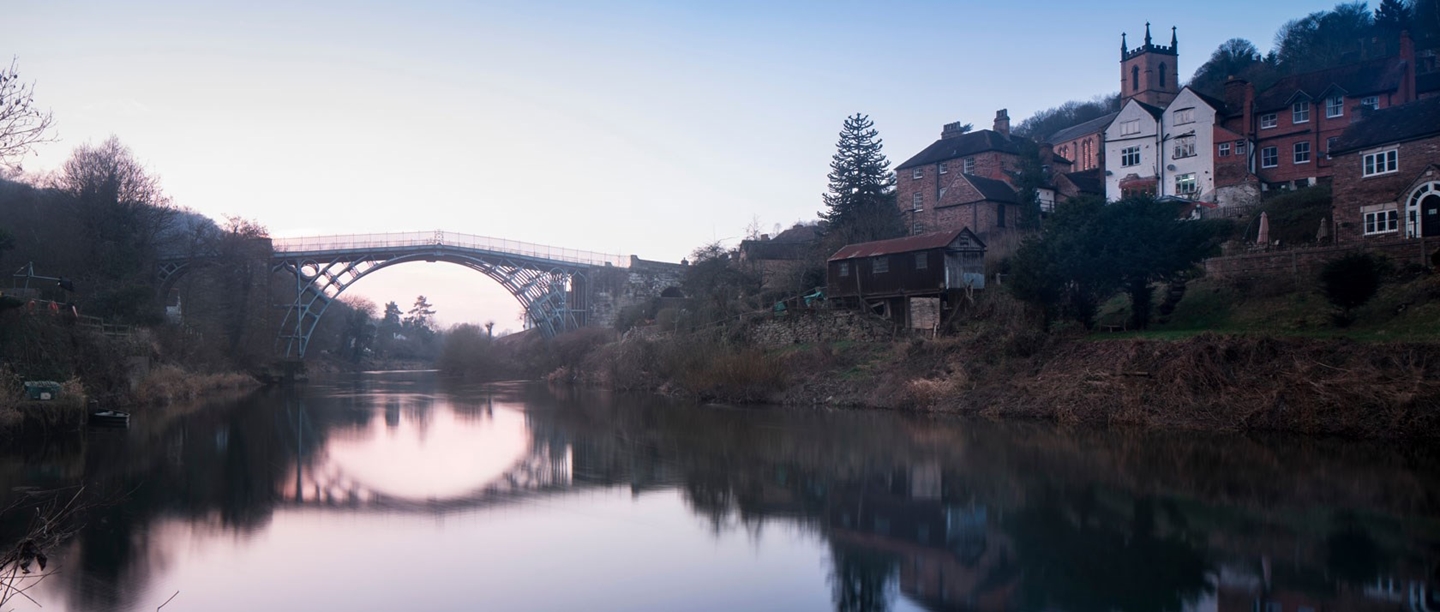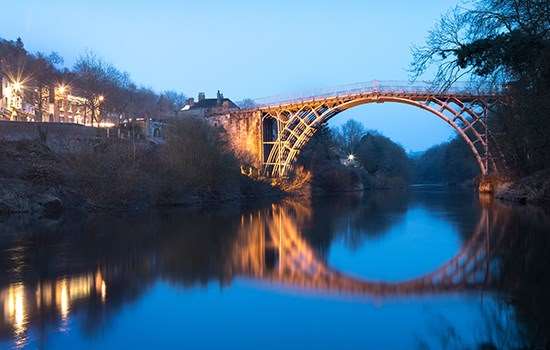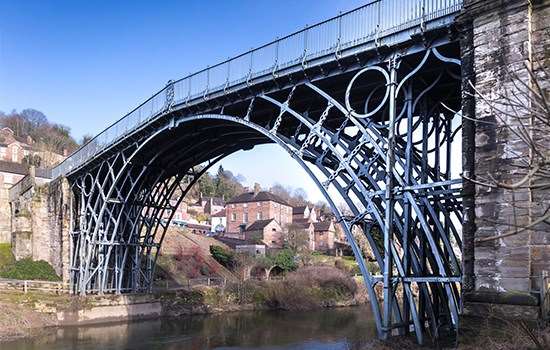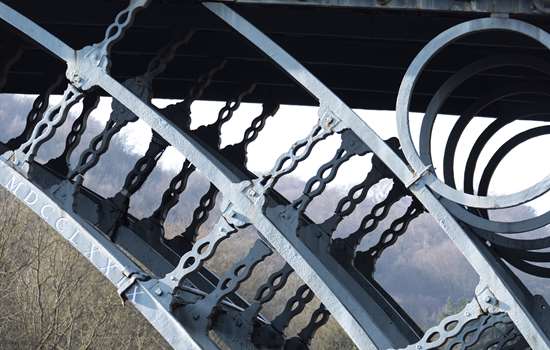1. It was the first structure in the world made from cast iron
Built in 1779 by a team of pioneering industrialists, the Iron Bridge was made possible through advances in iron smelting that took place in the century before. Casting such large parts was complicated and required skills developed over generations.
2. The bridge wasn't designed by Telford or Brunel
The man responsible for the design of the Iron Bridge was a Shrewsbury architect called Thomas Farnolls Pritchard. But Pritchard was an architect and stonemason by training and it is thought that the structure that we see today was influenced by Abraham Darby III who was experienced in working with iron.
3. The gorge, in which the bridge was built, was formed during the Ice Age
There are various geological theories about the formation of the Severn Gorge. One popular idea suggests that a large lake formed as the ice melted during the last Ice Age. As the water level rose, the lake overflowed forming fast-flowing streams which cut through the rock creating the dramatic gorge we see today.
4. Until 1950, everyone had to pay a toll to cross - even the Queen
They might rule the country, but a toll is a toll. A sign advised: 'Every officer or soldier whether on duty or not, is liable to pay toll for passing over as well as any baggage wagon, mail coach or the Royal Family.' You can still see the sign on the Toll House alongside the bridge today. Tolls for vehicles were removed in 1934 but pedestrians still had to pay until 1950.
5. An elephant has walked across the bridge
It's one of the best-loved images of the Iron Bridge and it proves that among the more eccentric visitors to the bridge was an elephant. In a publicity stunt promoting the Chapman's Zoo-Circus in 1932, the elephant marched across the 100-foot, 378-tonne bridge to the delight of wide-eyed onlookers.
6. A long line of Quaker ironfounders were involved
Abraham Darby I of Coalbrookdale, Shropshire, first experimented with the use of roasted coal, or coke, instead of charcoal in the production of iron in 1709. His grandson, Abraham Darby III, later funded much of the construction of the Iron Bridge out of his own pocket, and paid £3000 towards its construction. That's the equivalent of £438,000 today.
7. The Iron Bridge was almost sold for scrap
During the 1960s there was talk of dismantling the Iron Bridge and selling it for scrap. Thankfully in the 1970s, the site came under the guardianship of English Heritage and its predecessors, and was one of the first places in the UK to be inscribed onto the list of UNESCO World Heritage sites.




